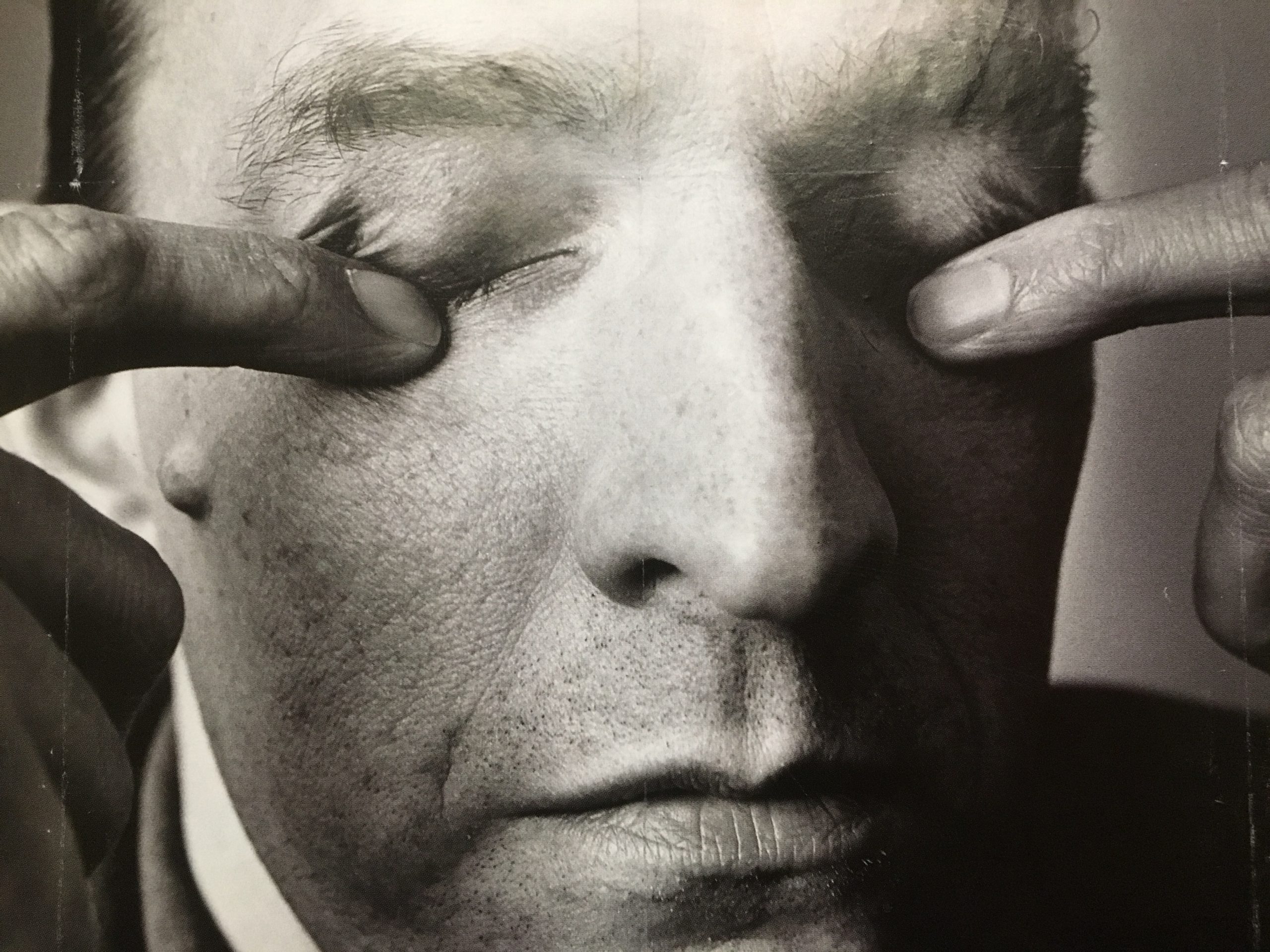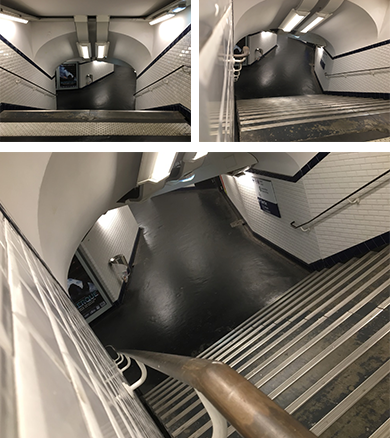 The Paris Metro. Over the years, when visiting cities, one of my favorite pastimes has been to roam deep underground in the metropolitan transit systems of today’s dense urban capitals. Be it Chicago, Berlin, Hong Kong, London, New York, Tokyo, or Paris and metro, métro, MTR, tube, underground or U-Bahn, navigating below street level is fascinating and a reality check on a city’s identity.
The Paris Metro. Over the years, when visiting cities, one of my favorite pastimes has been to roam deep underground in the metropolitan transit systems of today’s dense urban capitals. Be it Chicago, Berlin, Hong Kong, London, New York, Tokyo, or Paris and metro, métro, MTR, tube, underground or U-Bahn, navigating below street level is fascinating and a reality check on a city’s identity.
Of course, above ground is where most of my interests lay, enjoying museums, shopping, cafés, architecture and parks, and the numerous and fascinating expressions of urban life. The vivacity and excitement of street life is refreshing and a welcome antidote to living year round in a small town in rural America. I am an urban “boy” but for most of my adult life have been associated professionally with land grant universities, thus the necessity to live in remote places where universities are akin to small cities but mostly devoid of urbanity.
Urban underground forays are part of reaching my above ground destinations, but often I linger in these anonymous corridors where busy crowds proceed mechanically—like assigned chess pieces—eager to reach their destination. I am fascinated to observe this anonymous environment, perhaps because it’s one of the definitions of being an urban flaneur; standing on the sideline and witnessing life unfold in front of me.
 Modern day-to-day subway scenes are similar to those of American painter Edward Hopper (1882-1967), whose “spare depictions of familiar public and private spaces are often understood within the contexts of isolation, loneliness, and ennui of early and mid-20th-century America.[1]”
Modern day-to-day subway scenes are similar to those of American painter Edward Hopper (1882-1967), whose “spare depictions of familiar public and private spaces are often understood within the contexts of isolation, loneliness, and ennui of early and mid-20th-century America.[1]”
 A cosmopolitan life unfolds in the subway and, in particular, in subway carriages without much disguise or veneer. The crowd’s expressions, furtive glances and pretended disinterest, translate the weight of endless daily commutes through crowded train cars that act as umbilical cords between work and home. Most passengers avoid eye contact, many text frantically, listen to music or simply express their exhaustion by closing their eyes. I like to photographs these anonymous actors in their vulnerable moments to freeze their reality in time (see above images taken in the Hong Kong MTR).
A cosmopolitan life unfolds in the subway and, in particular, in subway carriages without much disguise or veneer. The crowd’s expressions, furtive glances and pretended disinterest, translate the weight of endless daily commutes through crowded train cars that act as umbilical cords between work and home. Most passengers avoid eye contact, many text frantically, listen to music or simply express their exhaustion by closing their eyes. I like to photographs these anonymous actors in their vulnerable moments to freeze their reality in time (see above images taken in the Hong Kong MTR).
 The underground maze-like city needs to be efficient. It is coordinated through coherent colorful visual styles and carefully designed signage. Massimo Vignelli’s (1931-2014) graphics for NYC’s subway design, which include abstract cartographic subway maps, are legendary and increased the public’s awareness of ‘good design.’ The signage is punctuated by urban publicities, troubadour artists and occasional vendors (in Paris they sell fruit).
The underground maze-like city needs to be efficient. It is coordinated through coherent colorful visual styles and carefully designed signage. Massimo Vignelli’s (1931-2014) graphics for NYC’s subway design, which include abstract cartographic subway maps, are legendary and increased the public’s awareness of ‘good design.’ The signage is punctuated by urban publicities, troubadour artists and occasional vendors (in Paris they sell fruit).
Corridors amplify the sound of the crowd’s movement and lead us to larger hallways or major intersections that inevitably redirect passengers back to other corridors and their chosen subway line, or to one of the numerous exits (sortie); the latter returning a sense of humanity as we rekindle with the sun and trees, and breathe fresh air while regaining a sense of neighborhood, perhaps exiting on one of Paris’ boulevards.
 Late one evening in Paris, I was greeted by a haunting poster that was a metaphor of a quasi-empty subway. The atmosphere was sublime. Corridor after corridor was empty, with only a few late-night commuters straggling home. The spaces were populated by the thousands of ghosts and memories of the sounds of recent rush hours. These elongated spaces—now rendered spatially ambiguous and disorienting—showcased the white shiny tiles, bright white neon lights, endless stairs and escalators, echoing the memories of familiar daily sounds and precautionary blasts from loudspeakers: Charles de Gaulle -Étoile. Attention a la marche en descendant du train; transférer au M1 et RER direction Marne La Vallée; nous regrettons le retard sur la ligne M4 direction Porte de Clignancourt.*
Late one evening in Paris, I was greeted by a haunting poster that was a metaphor of a quasi-empty subway. The atmosphere was sublime. Corridor after corridor was empty, with only a few late-night commuters straggling home. The spaces were populated by the thousands of ghosts and memories of the sounds of recent rush hours. These elongated spaces—now rendered spatially ambiguous and disorienting—showcased the white shiny tiles, bright white neon lights, endless stairs and escalators, echoing the memories of familiar daily sounds and precautionary blasts from loudspeakers: Charles de Gaulle -Étoile. Attention a la marche en descendant du train; transférer au M1 et RER direction Marne La Vallée; nous regrettons le retard sur la ligne M4 direction Porte de Clignancourt.*

At night the spaces were no longer the same but carried a sense of place I had never experienced. I photographed some of the corridors as I would have during the day. Then, as if I was breathing on their walls, transforming them, the space presented itself in a newly and I captured the stairwell as a collage of abstract shapes, forms and textures. “My” subway was less mundane; it was a work of art.
*Charles de Gaulle -Étoile. Please mind the gap between the train and the platform; transfer to the M1 and the RER direction Marne La Vallée; we apologize for the short delay on the Line 4 direction Porte de Clignancourt.
[1] Virginia Museum of Fine Arts (VMFA), Edward Hopper and the American Hotel, exhibition October 26, 2019 – February 23, 2020.